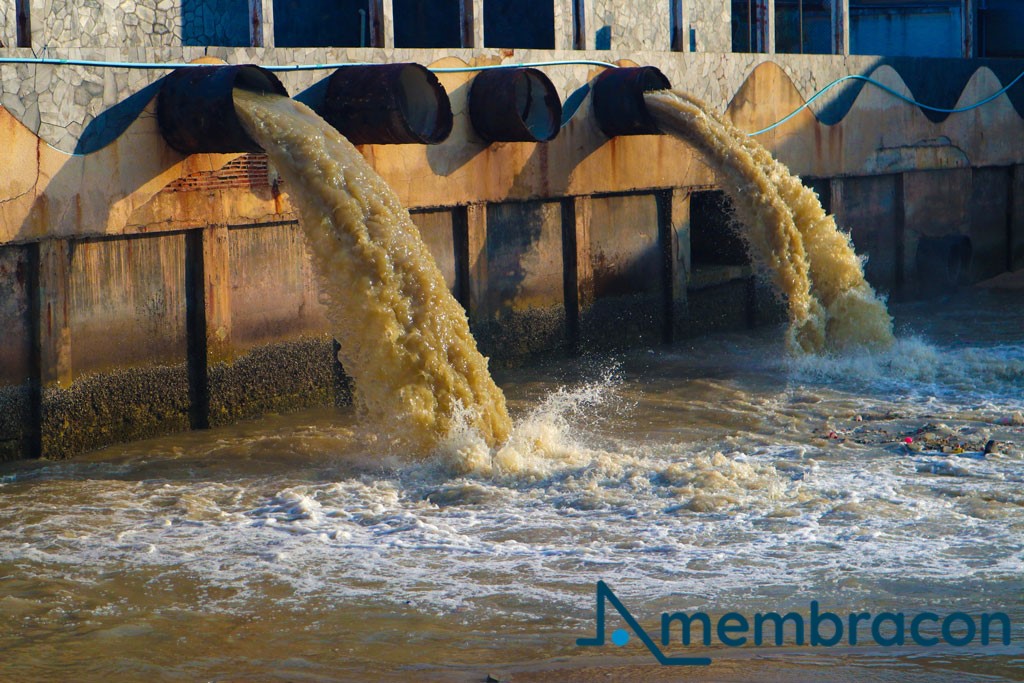Checking out the Role of Biotechnology in Waste Water Treatment
Checking out the Role of Biotechnology in Waste Water Treatment
Blog Article
Strategic Approaches to Improve Waste Water Treatment Performance and Lessen Environmental Effect
In the realm of drainage therapy, the quest for boosted performance and decreased ecological influence is a perpetual challenge that demands tactical remedies. As culture grapples with the necessary to handle water sources sustainably, a nuanced strategy comes to be vital. The combination of innovative treatment technologies, energy-efficient procedures, resource healing techniques, enhanced nutrient elimination techniques, and smart monitoring and control systems represents a diverse framework for resolving these pressing worries. Nevertheless, what exists at the core of this complicated web of techniques is the possible to transform the means we come close to drainage treatment, not equally as a process of disposal, yet as a valuable opportunity for advancement and environmental stewardship.
Advanced Treatment Technologies
Sophisticated membrane layer purification systems have actually revolutionized innovative wastewater treatment processes, dramatically boosting the removal of pollutants. This modern technology has shown to be very effective in removing a broad array of pollutants, including drugs, hefty steels, and organic substances, which are frequently challenging to eliminate through typical treatment techniques.
Additionally, membrane purification systems provide numerous benefits over standard therapy techniques. Additionally, these systems are highly flexible and can be easily integrated into existing therapy plants or made use of as standalone systems for decentralized applications.
Energy-Efficient Processes
The integration of energy-efficient procedures in wastewater therapy systems is essential for optimizing source use and reducing functional prices. By carrying out energy-efficient technologies, treatment plants can dramatically lower their carbon impact and general ecological impact. One vital strategy to enhancing power efficiency in wastewater therapy is the usage of innovative aeration systems, such as great bubble diffusers or surface aerators, which can improve oxygen transfer effectiveness and lower power intake. In addition, including power recuperation systems, like anaerobic food digestion for biogas manufacturing or using excess heat for thermal processes, can help offset energy needs and promote sustainability.
Furthermore, enhancing procedure control and automation via the use of sophisticated sensors and monitoring systems can boost total energy efficiency by readjusting procedures in real-time based on actual demand and problems. Executing power audits and consistently checking power performance signs are essential practices to recognize locations for enhancement and track energy-saving campaigns effectively. In general, the adoption of energy-efficient procedures in wastewater treatment not only benefits the atmosphere however also adds to long-lasting price savings and operational sustainability.
Source Recuperation Approaches
With a focus on enhancing source usage and sustainability in wastewater treatment systems, the application of source recuperation techniques becomes an essential element in enhancing operational efficiency. Source recovery strategies in wastewater treatment involve the recognition and removal of useful resources from the waste stream, thereby turning what was when taken into consideration waste into a beneficial possession. By implementing resource recuperation techniques such as nutrient removal and healing, power generation from natural matter, and the production of recyclable water, wastewater therapy plants can lessen ecological influence while maximizing efficiency.

Enhanced Nutrient Removal Techniques
Executing sophisticated nutrient removal techniques is important for maximizing the efficiency of wastewater treatment systems. Enhanced nutrient elimination plays an essential role in minimizing the ecological impact of treated effluent discharged into water bodies. One of the essential methods made use of for improved nutrient elimination is the process of organic nutrient elimination (BNR), which involves the removal of nitrogen and phosphorus through biological processes. This can be achieved through making use of specialized bacteria that can see page convert nitrogen substances into inert nitrogen gas through denitrification, and build up phosphorus within their cells via a process called enhanced biological phosphorus elimination (EBPR)

Along with BNR, progressed therapy approaches such as membrane layer bioreactors (MBRs) and constructed wetlands can likewise be utilized to enhance nutrient elimination performance. MBRs make use of membranes to accomplish high-quality effluent requirements by efficiently removing nutrients and put on hold solids. Built wetlands mimic natural wetland procedures to eliminate nutrients with plant uptake, microbial task, and sedimentation. By including these advanced nutrient elimination methods right into wastewater therapy markets, systems and districts can effectively minimize nutrient pollution and safeguard the environment.
Smart Monitoring and Control Systems
Making use of cutting-edge innovation, the combination of clever monitoring and control systems reinvents the functional efficiency of wastewater therapy centers. These systems incorporate sophisticated sensing units and information analytics to continually monitor crucial parameters such as pH degrees, turbidity, dissolved oxygen, and circulation rates in real-time. By collecting and evaluating this information, drivers can gain valuable insights into the efficiency of the treatment procedures, allowing positive changes to optimize therapy efficiency.
Smart surveillance and control systems also sustain remote surveillance abilities, enabling operators to gain access to real-time information and control functions from off-site areas. This remote accessibility improves functional adaptability and responsiveness, making it possible for speedy treatments in case of system malfunctions or fluctuations in influent quality. In addition, the anticipating maintenance capabilities of these systems help avoid tools failures and lessen downtime, inevitably boosting the overall integrity of wastewater therapy operations (Waste Water Treatment).
Verdict
Finally, critical techniques such as advanced therapy this contact form modern technologies, energy-efficient procedures, resource recovery approaches, improved nutrient removal techniques, and clever tracking and control systems play a crucial role in enhancing wastewater therapy efficiency and lessening ecological effect. By carrying out these techniques, wastewater therapy plants can improve their overall performance, reduce power consumption, recoup important resources, and make certain conformity with ecological policies. These methods are crucial for reliable and lasting wastewater administration techniques.

In verdict, calculated techniques such as sophisticated treatment modern technologies, energy-efficient processes, source recovery techniques, improved nutrient elimination strategies, and clever surveillance and control systems play a crucial function in enhancing wastewater treatment performance and minimizing environmental influence.
Report this page